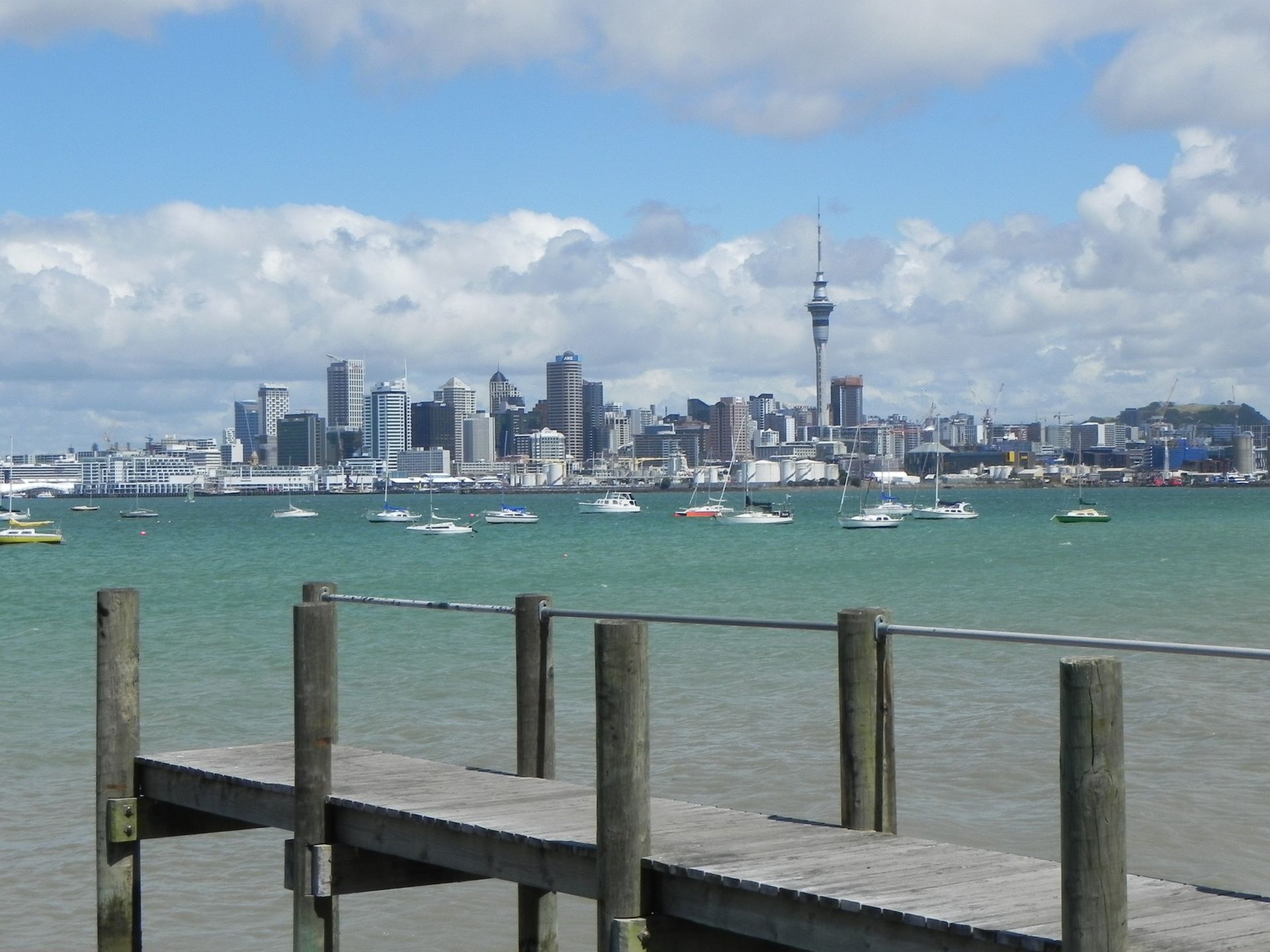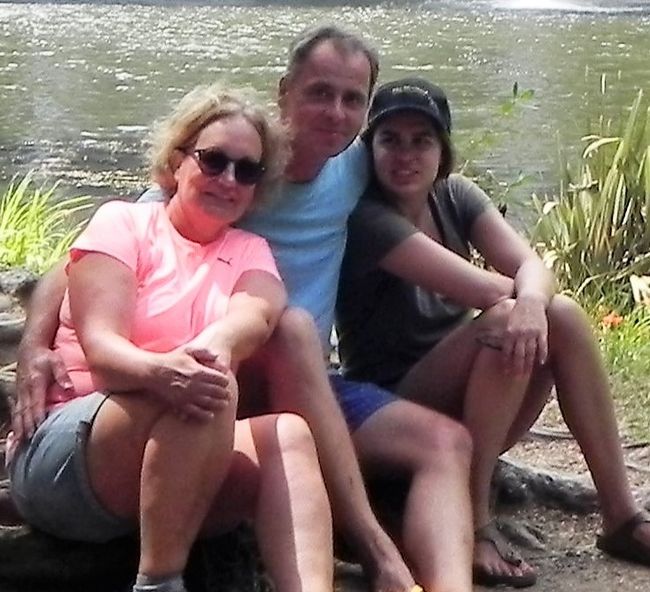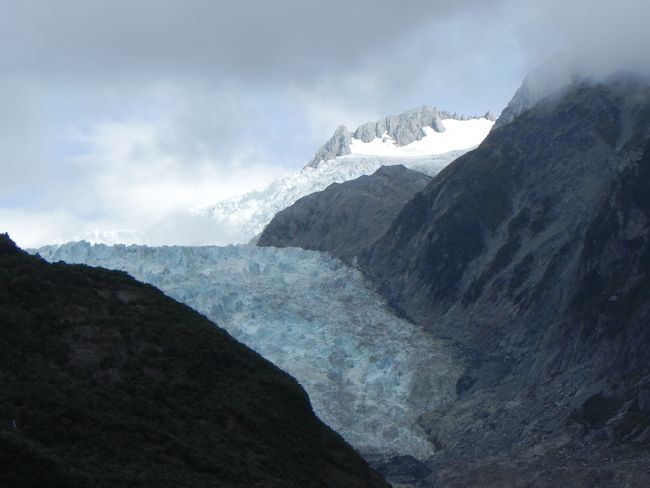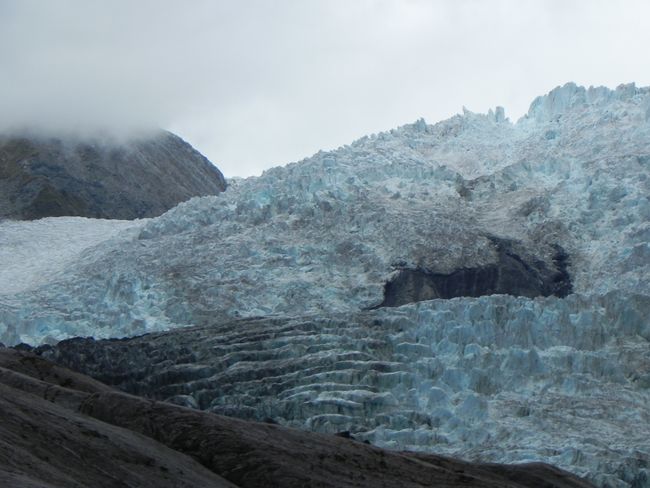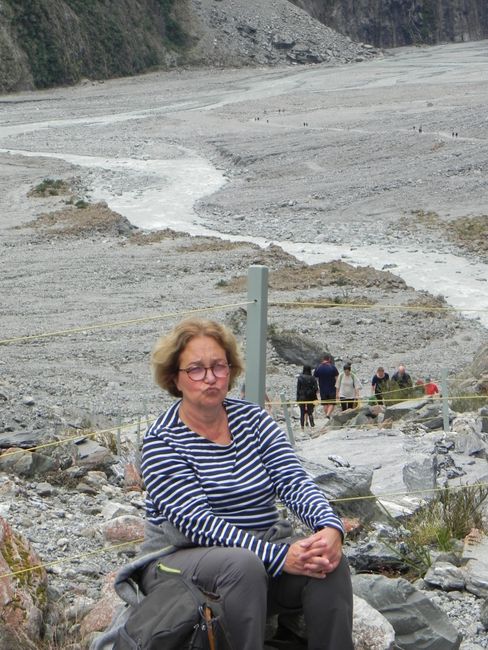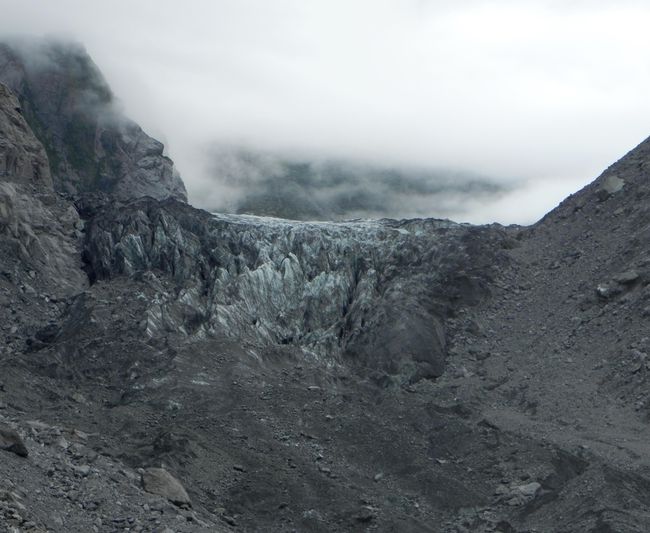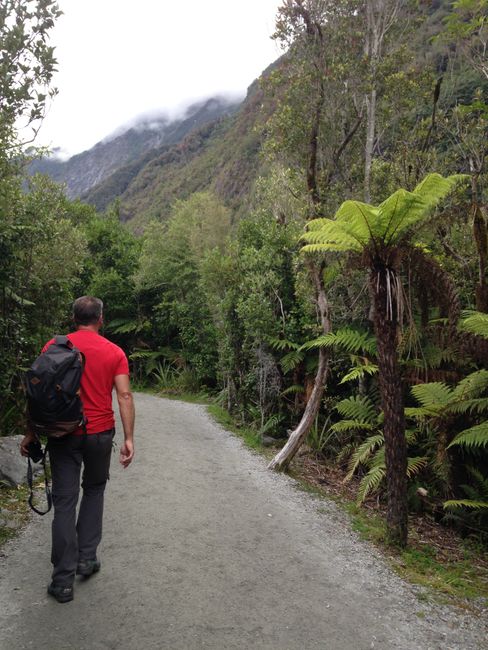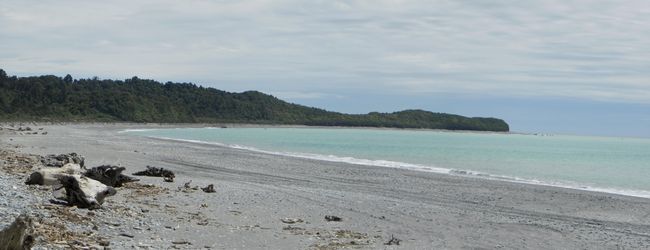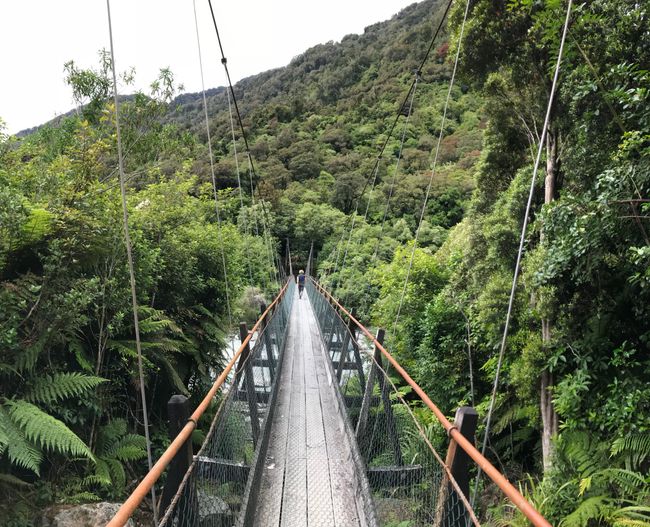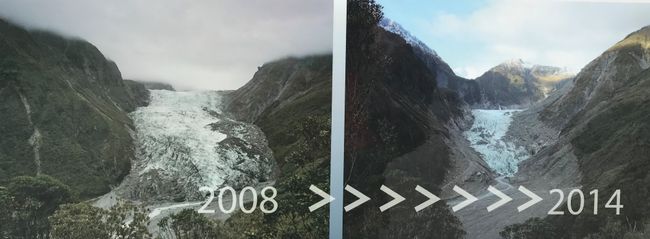30.12.2017 - Glaciers
Publicat: 30.12.2017
Aboneaza-te la Newsletter
Another eventful day comes to an end for us. Today, we went on a glacier tour.
We started with the Fox Glacier, which is smaller and less visited. It takes about 15 minutes to walk from the parking lot on moraine debris and due to barriers, you can only approach the glacier tongue. Somehow, it was sobering because the glacier is gray to black, covered in debris.
For several years now, helicopters are the only way to access the glaciers. The immense melting has led to the exposed valley walls, which were previously covered by glaciers, making climbing extremely dangerous. Therefore, a helicopter flight over or on the glacier, which is not quite cheap, has become a popular offer for mass tourism.
Joachim was interested in a glacier hike, but it is only possible by helicopter and costs at least 400 NZD (about 240 €) per person, not exactly a bargain. However, most tourists only book a scenic flight, possibly with an 8-minute 'stopover'.
Yesterday, we constantly saw helicopters take off and land, which was a strange and conflicting experience.
I, Birgit, initially had some apprehension about walking on the old and rickety suspension bridge over the Fox River, but then I had a lot of fun.
As the sky cleared up and turned really blue in the west, we drove towards the cloudless stretch to the Tasman Sea. The way there led through a gravel road in the rainforest and ended after 20 km at a huge beach, Gillespies Beach. These contrasts - glaciers, lush green rainforest, almost white sandy beach, turquoise sea - are truly amazing, both in terms of color and landscape.
Afterwards, we set out to discover the second glacier of the day, the Franz Josef Glacier. It is significantly larger and more impressive, and in the afternoon, the path towards it is not as crowded.
The 45-minute walk starts in the rainforest with impressive tree ferns and leads over moraine debris to below the glacier tongue. It truly leaves you in awe when you stand so close to it. According to a Maori legend, the Franz Josef Glacier was formed from the flow of tears shed by a young woman over the death of her lover in an avalanche.
References to climate change are very noticeable here in New Zealand, especially in recent years. These are pointed out through a signboard (see picture) on the way to the glacier. Since the end of the Little Ice Age (15th to mid-18th century), both glaciers have lost three kilometers in length, which is about 20 percent of their size. Recently, they have been melting even faster than ever before, with climate change being a driving factor here as well.
Aboneaza-te la Newsletter
Răspuns
